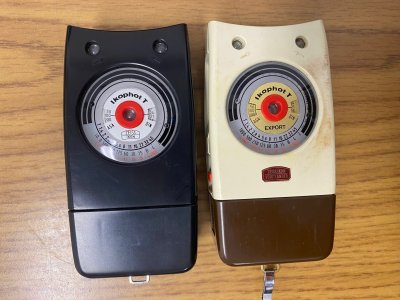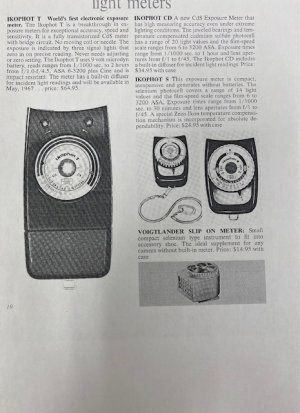hilltime
Well-known
I have these two Zeiss meters probably not far apart in age. Just took them out and inserted a fresh 9v battery and was checking their reliability as I haven't tested in a number of years. The white meter reads accurately outside in bright light 1/250@F5.6 ASA 100 and in a testing area (white wall) inside, 1/50@F4. Both are correct, confirmed with a more modern known value meter. The black version reads the same outside, close to 1/250@F5.6 ASA 100, but inside reading is remarkably different,
1/15@F1.4. Any reasoning behind this that anyone might know or guess? Would it be the failure of the CDS cell in a lower light condition or some other condition?
An inquiring mind would like to know......
1/15@F1.4. Any reasoning behind this that anyone might know or guess? Would it be the failure of the CDS cell in a lower light condition or some other condition?
An inquiring mind would like to know......



